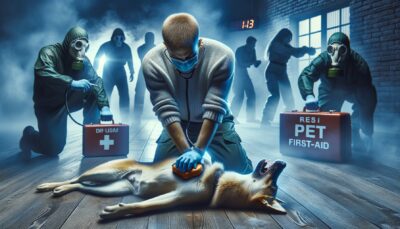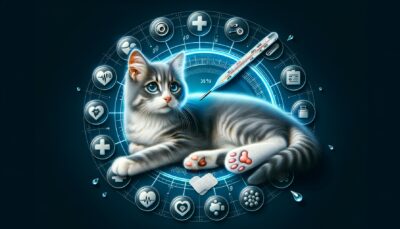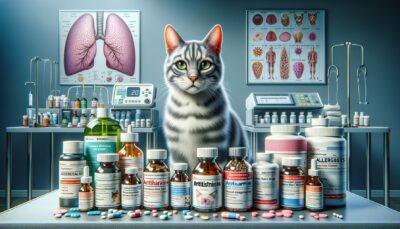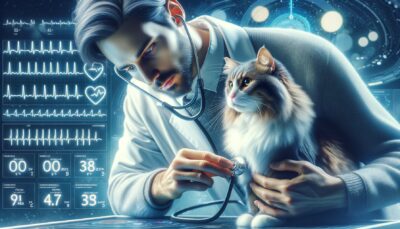As a pet expert with excellent expressive skills, I’m here to help you learn the 5 essential skills for basic cat first-aid. Not only are these skills important for keeping your feline friend safe and healthy, but they can also come in handy in case of an emergency. So let’s dive into the world of cat care and make sure you’re prepared to handle any situation with ease!
Why is basic cat first-aid important?
1. Quick response can save lives:
In emergency situations, knowing how to quickly and effectively administer first-aid can mean the difference between life and death for your cat. Being prepared to act swiftly could be the key to preventing a minor issue from turning into a major emergency.
2. Bonding with your cat:
Taking care of your cat’s health and well-being builds a stronger bond between you and your furry friend. By learning basic first-aid skills, you demonstrate your commitment to their care and show them that you’ll always be there to provide comfort and support.
3. Peace of mind:
Having the knowledge and skills to handle common health issues gives you peace of mind as a pet owner. Instead of feeling anxious or helpless when your cat is unwell, you’ll feel confident in your ability to provide them with the care they need.
4. Building trust:
When your cat sees that you are capable of handling their health needs, they will trust you more and feel secure in your presence. This trust is essential for a strong and loving relationship between pet and owner.
5. Being prepared for the unexpected:
Accidents and illnesses can happen at any time, so being prepared with basic cat first-aid skills ensures that you’re ready to handle any situation that comes your way. Your quick thinking and actions could make all the difference in an emergency.
What are the 5 essential skills for basic cat first-aid?

1. Wound care
Hey there! So, you want to make sure your cuts and scrapes heal up nice and clean, right? Well, here’s the lowdown on how to do it like a boss. First things first, you gotta learn how to clean and dress wounds properly to keep infections at bay and help them heal faster. Make sure to have a well-stocked first-aid kit with all the essentials like antiseptic wipes, gauze pads, and bandages. Transitioning from cleaning to dressing, gently wipe the area around the wound with an antiseptic wipe to kill any bacteria lurking around. Then, cover the wound with a sterile gauze pad and secure it in place with a bandage. And voila! Your wound is all set to heal up without any nasty infections ruining the party. Take care and happy healing!

2. CPR and rescue breathing
Imagine the fear and panic that sets in when someone is choking or drowning. The seconds feel like hours as you desperately search for a way to help. But if you take a certified pet first-aid course, you can be the one to step in and make a difference. Knowing how to perform CPR and rescue breathing can be the difference between life and death. So don’t wait until it’s too late, prepare yourself and be ready to save a life when it matters most.

3. Recognizing and responding to poisoning
If you notice any unusual behavior in your cat such as vomiting, diarrhea, difficulty breathing, or seizures, it’s important to stay calm and assess the situation. Remember, you know your cat best so trust your instincts. It’s crucial to act quickly and contact your vet or a pet poison helpline immediately. They will be able to provide guidance on the necessary steps to take. Do not try to induce vomiting or give any treatments without professional advice. Your cat’s health and safety should be your top priority, so don’t hesitate to seek help if you have any doubts.

4. Managing allergic reactions
Cats, just like humans, can suffer from allergic reactions to various substances. It is important to pay attention to any changes in your cat’s behavior or physical appearance that could indicate an allergy. Common allergens for cats include pollen, dust mites, certain foods, and even flea bites. If you notice your cat scratching excessively, sneezing, or developing skin rashes, it could be a sign of an allergic reaction. In such cases, it is crucial to consult your vet and keep antihistamines and other medications recommended by them on hand to address the allergy promptly and effectively. Remember, your cat’s health and well-being are in your hands, so stay vigilant and take action when needed to keep your furry friend happy and healthy.

5. Monitoring vital signs
Our furry friends rely on us to keep them healthy. So, it’s important to show them some extra care by regularly checking their vital signs. Start by monitoring their heart rate, respiratory rate, and body temperature. By understanding what is normal for your cat, you can easily spot any abnormalities and take action early on. Remember, our pets can’t communicate when something is wrong, so it’s up to us to keep a close eye on their health. Let’s give our beloved cats the love and attention they deserve!
By mastering these 5 skills for basic cat first-aid, you can be better prepared to handle any health emergency that may arise with your furry friend. Remember, your cat relies on you for their well-being, so take the time to learn these essential skills and be a responsible and caring pet parent.
more:https://vcahospitals.com/know-your-pet/first-aid-for-cats
